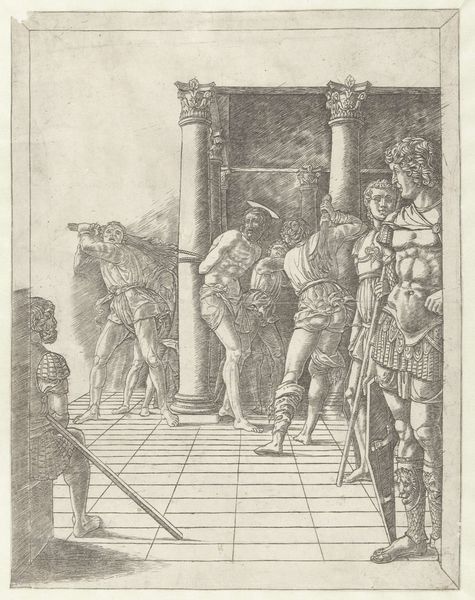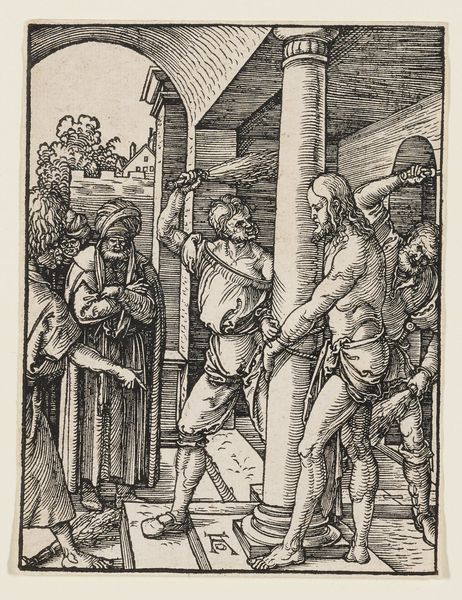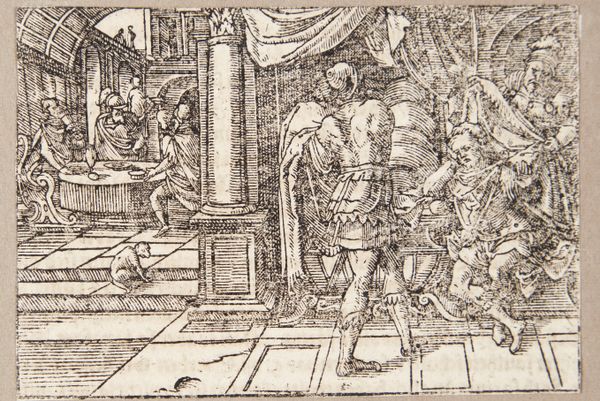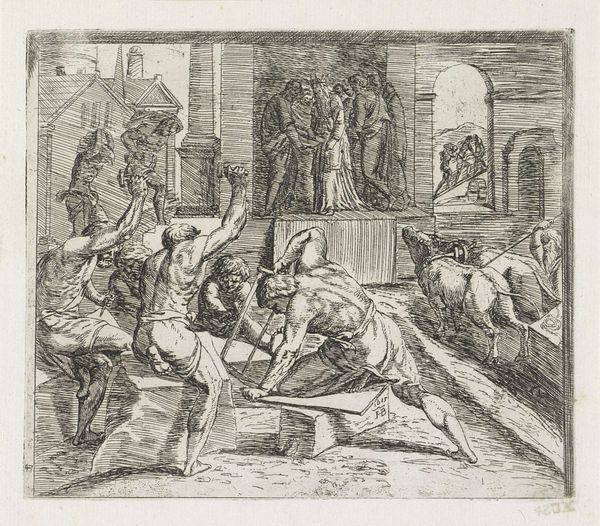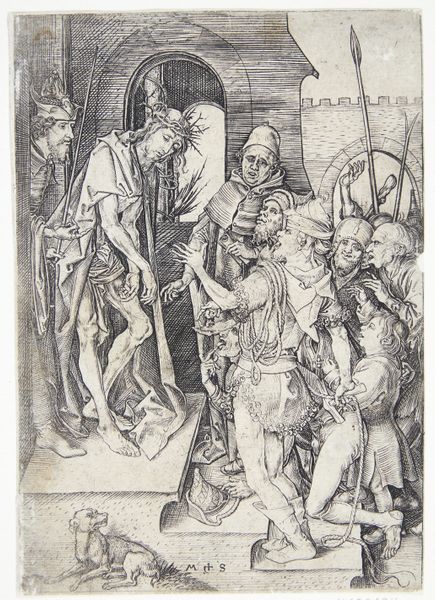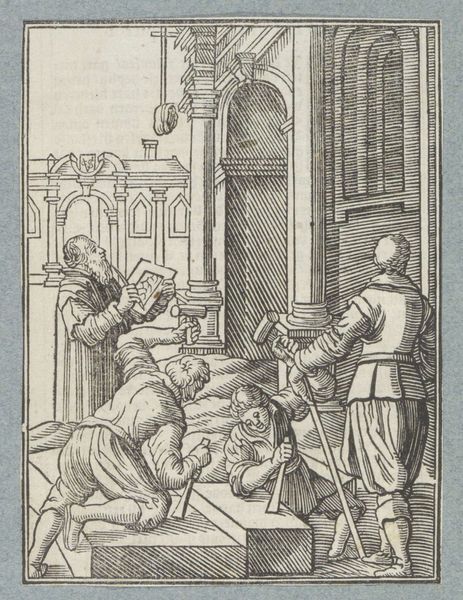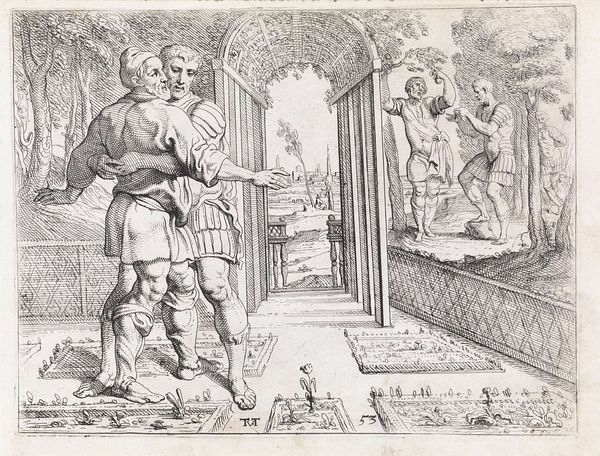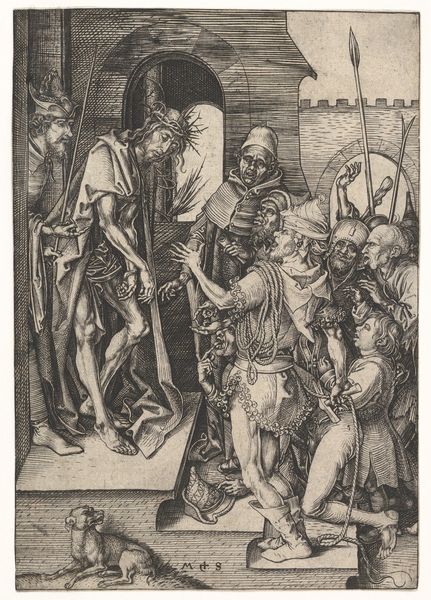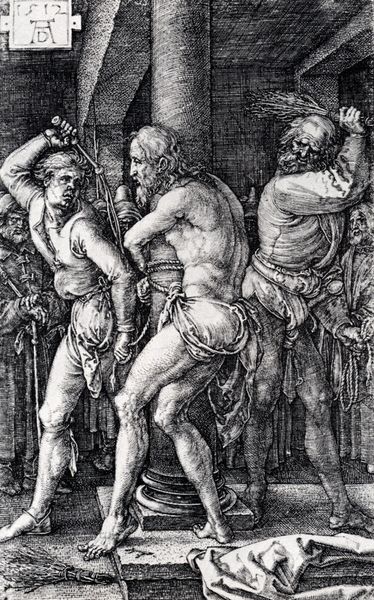
tempera, print, engraving
#
tempera
# print
#
sculpture
#
figuration
#
jesus-christ
#
soldier
#
christianity
#
history-painting
#
italian-renaissance
#
engraving
#
mixed media
#
christ
Dimensions: 44.2 x 34.3 cm
Copyright: Public domain
Curator: This is Andrea Mantegna's "The Flagellation of Christ in the Pavement," dating from around 1475. It's a print, an engraving in tempera. Editor: The first thing that strikes me is the palpable tension despite the stoic poses of some figures. There is something terribly unjust unfolding in the mundane architecture—a complete indifference to suffering. Curator: Precisely. Mantegna masterfully utilizes the graphic capabilities of engraving to depict not only the human form with precise anatomical detail, but also to suggest the textures of stone and metal that contribute to the oppressive atmosphere. Note the materiality of the architectural components versus that of the soft vulnerable flesh. Editor: Considering the socio-political climate of the Italian Renaissance, how does Mantegna use the depiction of Christ's flagellation to critique or comment on contemporary issues of power, authority, and injustice? The composition places the viewer in a position of power—looking down—suggesting complicity with those meting out this torture. Curator: Good point. Think of the laborious process of creating the engraving; each line meticulously etched into the metal plate, each print pulled by hand. This connects directly to artisan production. Mantegna blurs the boundary between "fine art" and craft. Who was engaging with these images and what social class did they belong to? Editor: It speaks to the growing influence of humanism and its focus on the individual, placing the figure of Christ as a subject for empathy and political contemplation in a period defined by hierarchical structure. How many people who saw this print were also subject to unjust legal systems? Curator: Moreover, consider the function of these prints. How easily could they be distributed? This work enters into networks of exchange, and becomes part of a wider system of image production and circulation. Editor: Looking at Mantegna through an intersectional lens, we can see his representation of Christ and his tormentors reveals much about the Renaissance construction of masculinity, faith, and governance. Curator: Yes. Investigating the labour and materiality of the artwork gives insights into economic structures, social relations, and modes of communication circulating in Renaissance Italy. Editor: Examining this work and understanding how suffering becomes politicized echoes concerns in our contemporary struggles. Curator: A look at the materiality alongside the religious aspects adds significant meaning to this work.
Comments
No comments
Be the first to comment and join the conversation on the ultimate creative platform.

